
A Return to Milk Wood
[caption id="DylanThomas_Feature" align="aligncenter" width="1024"]
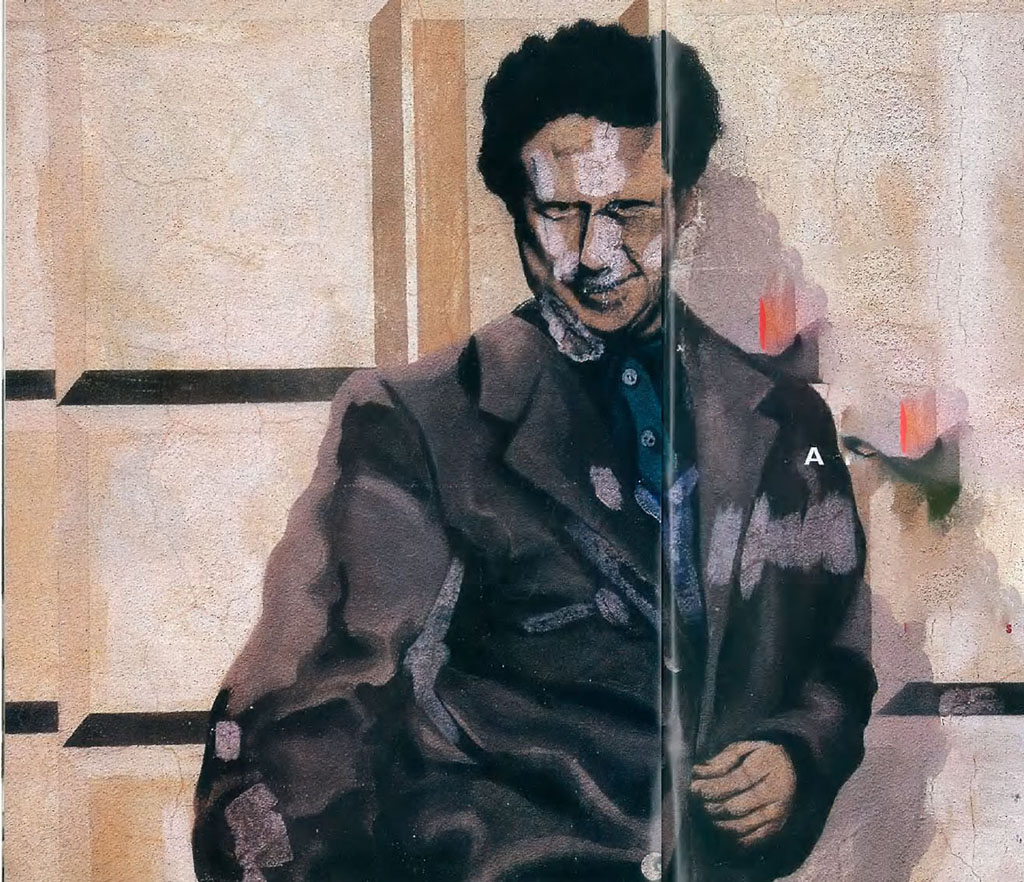
Chris Sharp
several routes winding through south-west wales explore the would of aeguably, the nation’s mast talented writer.
fIFTY YEARS AGO THIS NOVEMBER in St. Vincent’s Hospital, New York, the Welsh poet and playwright Dylan Thomas diecl from a surfeit of alcohol. Reflecting a resurgence of interest in him, several trails have recently been established that link the places associated with the poet’s life and work. All the trails start in Swansea at either the Dylan Thomas Centre or at Number 5, Cwmdonkin Drive, where on 27th October 1914, in the front bedroom of a semi-detached Edwardian house, Thomas was born. Cwmdonkin Drive is a steep, treelined street. In “Old Garbo,” the poet describes his house as “reaching for the sky.” Normally it is closed, but visitors can obtain permission to enter from the Dylan Thomas Centre; or, a better alternative is to attend one of the literary meetings occasionally held here.
Thomas lived in this house for 2 0 years with his parents and sister. Downstairs are three rooms and a kitchen, with the front parlour solely for formal entertaining. The study Thomas’ father used became a private preserve the rest of the family was not allowed to enter. Young Thomas slept in the smallest and most cramped of the four upstairs bedrooms with views overlooking Swansea.
His mother doted on him, and he developed a loving, yet strained, relationship with his temperamental father, Dylan James Thomas. The elder Thomas was an outstanding scholar—a teacher at the local Grammar School, a position he detested—but a failed and frustrated poet. From his study he skulked away to indulge in heavy drinking sessions at nearby hostelries, including the Uplands Hotel.
[caption id="DylanThomas_img1" align="aligncenter" width="211"]
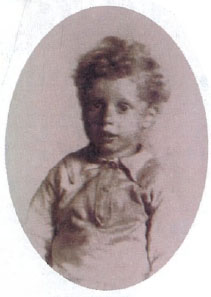
Chris Sharp
YOUNG THOMAS ATTENDED HIS FIRST SCHOOL at nearby 22 Mirador Crescent, now a private residence in a row of elegant Edwardian houses. Throughout his childhood he frequently played in nearby Cwmdonkin Park, mentioned in many of his poems.
The park remains a colourful oasis, where children play hide-and-seek, tumble down grassy banks, and roller skate on asphalted paths past ponds and fountains that were familiar to Thomas. The fountain from his poem “Hunchback in the Park” is still there, though the “chained cups” have long gone.
[caption id="DylanThomas_img2" align="aligncenter" width="904"]
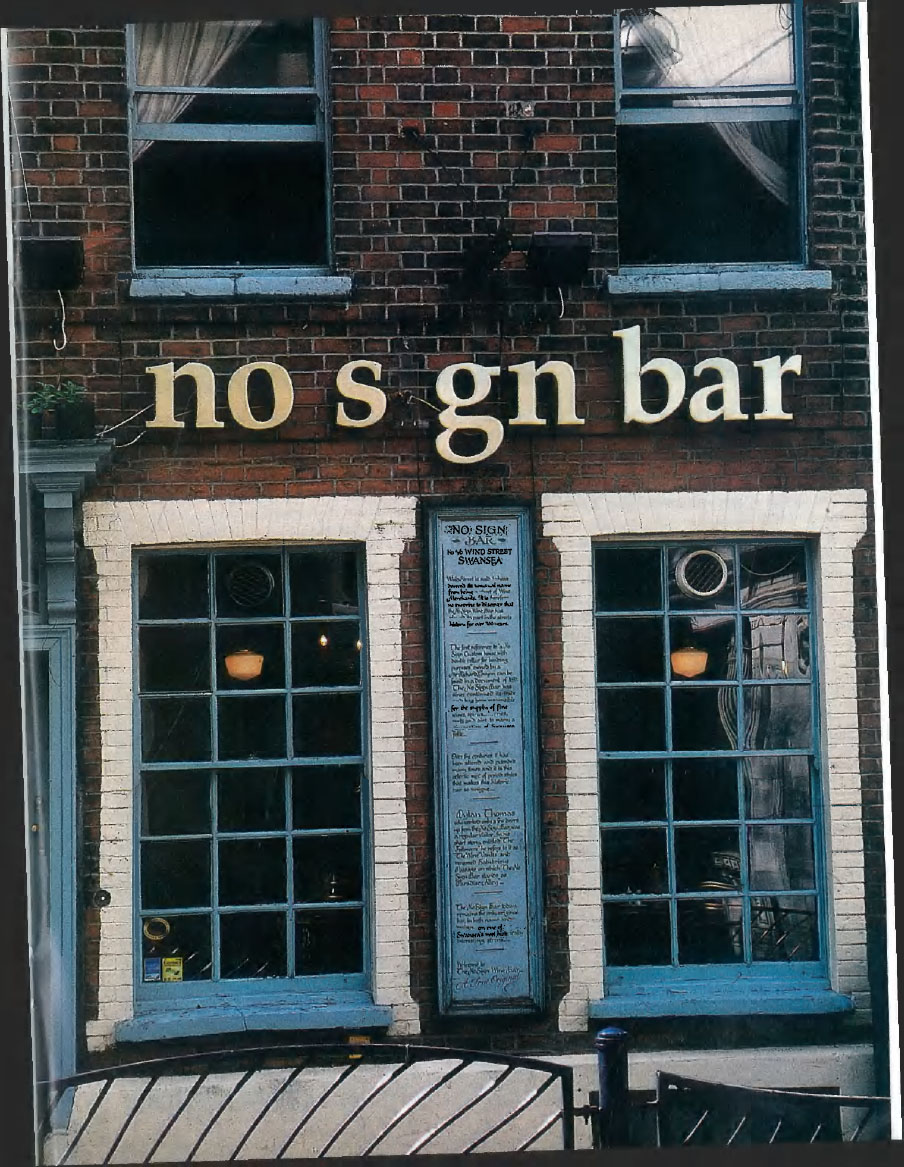
Chris Sharp
[caption id="DylanThomas_img3" align="aligncenter" width="193"]
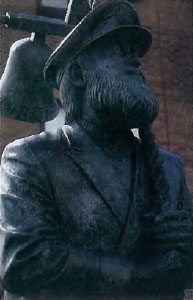
Chris Sharp
[caption id="DylanThomas_img4" align="aligncenter" width="193"]
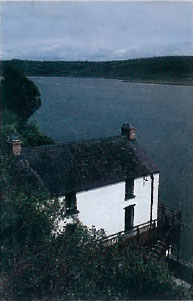
Chris Sharp
[caption id="DylanThomas_img5" align="aligncenter" width="193"]
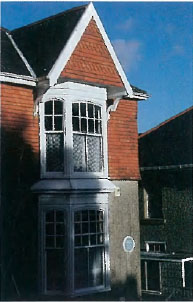
Chris Sharp
From Cwmdonkin Park the trail leads into Swansea via the Grove, the Crescent, and the Swansea Grammar School. The Grove’s associations with Thomas are twofold. As the trail descends from Cwmdonkin Park, it passes a single-storey building that is now a church meeting room. In the 1940s it housed BBC Swansea’s recording studio, where Thomas introduced a programme, “Swansea and the Arts,” with the words, “We speak from the Grove of Swansea.” The “we” included musician Daniel Jones, poet Vernon Watkins, and painter
Alfred Janes—talented friends whom Thomas sometimes called “the boys.” They had previously been members of the Kardomah Group, a set of opinionated individuals who met in the Kardomah Cafe to discuss topics spanning the arts, science, and society. Unfortunately the original cafe disappeared during the city’s redevelopment.
[caption id="DylanThomas_img6" align="aligncenter" width="681"]
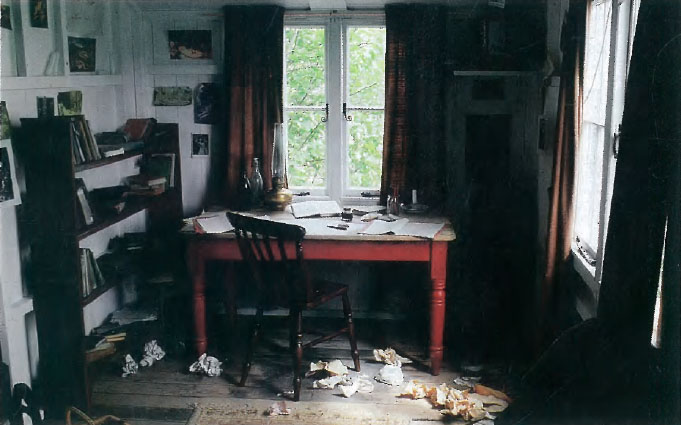
Chris Sharp
The Lloyds Bank that stands at the corner of the Grove was then the Uplands Cinema, where rumour has it that the youthful Thomas often bought tickets with money stolen from charity boxes. The cinema influenced him in several ways. First, it was a place for sheer entertainment, alluded to in his autobiographical “Return Journey” as “the flea pit for whooping for the scalping Indians.” The cinema also inspired his art. Thomas was enthralled by the silent movies’ ability to encapsulate emotion in celluloid images, and he endeavoured to achieve the same with his poetic imagery. His first literary acclaim came in response to a critique he wrote about the cinema. Not surprisingly, in later life he wrote numerous film scripts.
[caption id="DylanThomas_img7" align="aligncenter" width="196"]
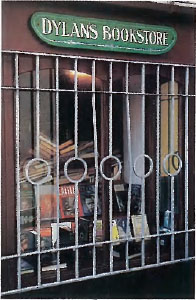
Chris Sharp
[caption id="DylanThomas_img8" align="aligncenter" width="196"]
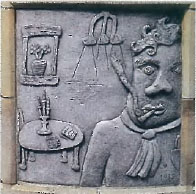
Chris Sharp
[caption id="DylanThomas_img9" align="aligncenter" width="194"]
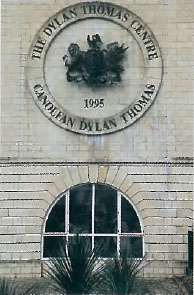
Chris Sharp
Nearby in the Crescent, the Uplands Tavern, where Thomas’ father had been a regular, became a favourite of the son as well.
eNROUTE TO THE TOWN CENTRE, the trail winds past the old Swansea Grammar School. The original buildings now form part of Swansea’s Institute of Higher Education and contain a small Dylan Thomas exhibition. Thomas did not excel at school. His teachers thought him able but lazy, and arrogant towards his peers. This attitude can be traced to his father, who was condescending to his colleagues at the school—indeed to almost everyone. Young Thomas enjoyed only English and drama, subjects that inspired him to proclaim that he had fallen in love with words and that he was going to be a poet.
[caption id="DylanThomas_img10" align="aligncenter" width="679"]
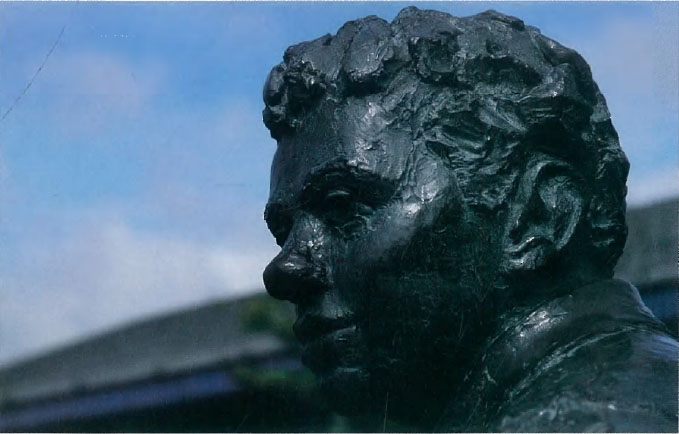
Chris Sharp
[caption id="DylanThomas_img11" align="aligncenter" width="857"]
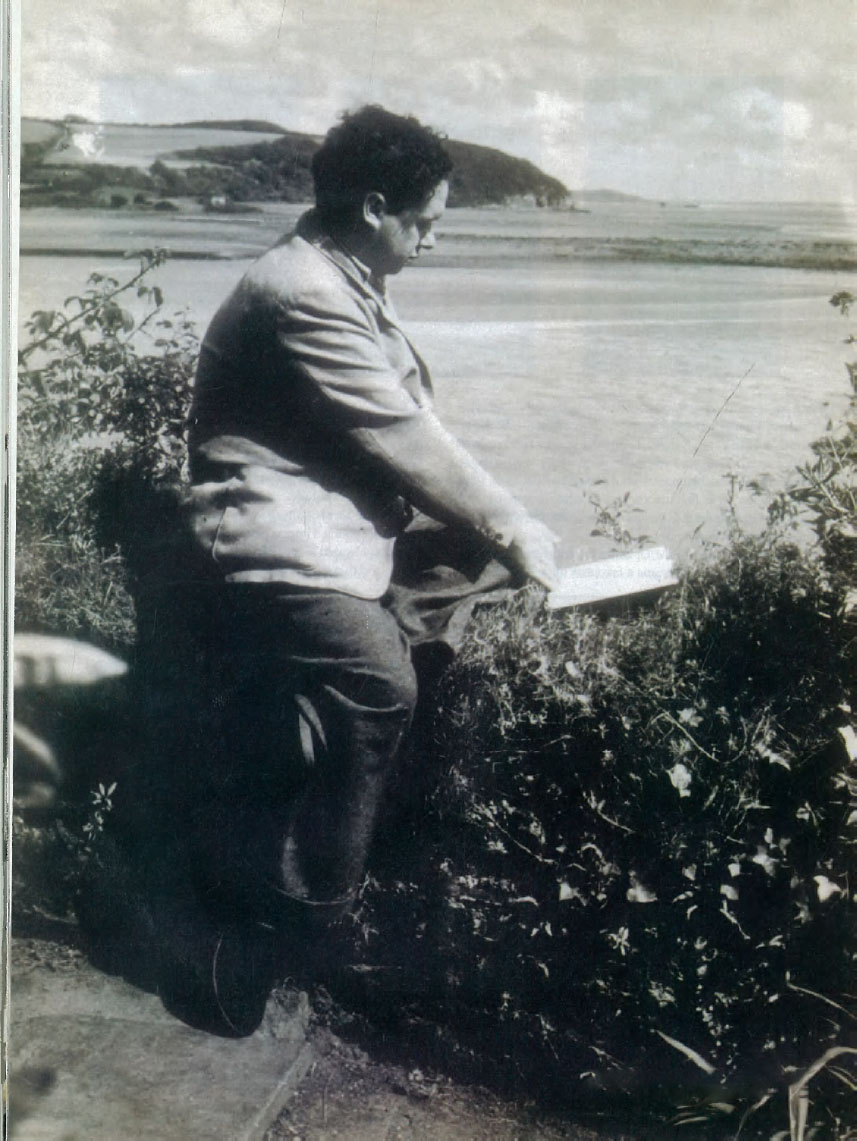
MARY EVANS/JOHN IDRIS JONES
He left school to become a reporter at the South Wales Daily Post’s Swansea office. Although the city has changed considerably since then—a consequence of heavy German bombing during World War II and hasty post-war reconstruction—enough of the old city around the Strand and the Quays remains to give a flavour of the Swansea of his journalist days.
In the 1930s the Strand and the Quays were a warren of cobbled streets and alleyways, with many pubs and clubs—the haunts of sailors, prostitutes, and lowlifes. These places and people provided Thomas with a rich source for his newspaper articles and for his imaginary poetic characters. The excellent Dylan Thomas Centre in the Quays houses permanent exhibits on all aspects of his life.
From the Centre the trail twists and turns through streets of Georgian houses, passes the Queen’s Hotel, once notorious for its shilling women whose services Thomas certainly used, and enters Dylan Thomas Square. In the Square’s centre stands an unflattering statue of him: a childish head with cherubic cheeks, perched on a man’s body.
[caption id="DylanThomas_img12" align="aligncenter" width="377"]
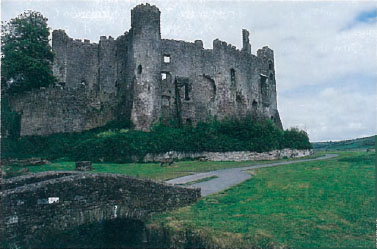
Chris Sharp
‘the path leading to the boathouse passes below the ramparts of laugharne castle, in whose gazebo thomas often sat and wrote.’
Alongside the Square, the walls of the Dylan Thomas Theatre have been decorated with a colourful mural that includes a realistic portrait of Thomas. This portrait reputedly provoked a local woman to telephone the police to complain about the lecherous image that seemed to be leering at her. Amidst the new and renovated Quay buildings is a statue of Captain Cat from “Under Milk Wood.”
tHOMAS’ ALCOHOL-INDUCED RUDENESS and lechery had plenty of opportunities to manifest themselves in the Strand’s countless pubs and bars. The Strand trail visits many spots where Thomas would go for a drink or to hang out and gossip. Bars and clubs line the principal street, the Wind (pronounced Wine), and visitors so inclined can follow Thomas on a Dylanesque pub crawl. Several good restaurants provide the opportunity to sit and observe the merrymaking. Thomas would have delighted in leering at today’s scantily attired, funloving women who carouse at the clubs on weekend nights.
JOURNEY NOTES
The Dylan Thomas Trail can be travelled in four to five days, but adding a few days will allow a more relaxed pace and time to explore.
[caption id="DylanThomas_img13" align="aligncenter" width="420"]
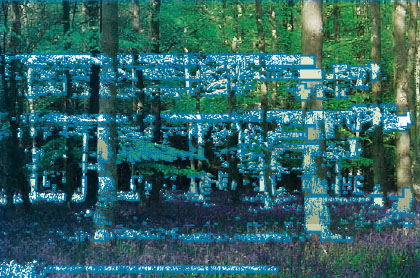
Chris Sharp
Information is on the web at writersroutes.com and a brochure is available by calling 0845 600 2780 or writing to Writers’Routes Visitor Guide, ECRM, Bourne House, 10 Windmill Rd., Hampton Hill. Middlesex TWI2 IRH, U.K. Four booklets titled The Dylan Thomas Trail £2 apiece, and each deals with a specific area: Swansea City Centre, Uplands, Mumbles & Gower, and West Wales. Books include Dylan Thomas’s Swansea, Gower and Laugharne: A Pocket Guide, by James A. Davies, The University of Wales Press, £6.99; and The Dylan Thomas Trail, by David N. Thomas, published by Y Lol Cyfa, £6.95, essentially a walking guide for trails in and around New Quay. The books are sold at the Tourist Information Centres in Swansea, New Quay, and Carmarthen. They are also on sale at the Dylan Thomas Centre in Swansea and at the Boathouse, Laugharne. Several bookstores in Swansea sell them too. In New Quay the Information Centre has a free pamphlet describing a walk around local Thomas sites.
Getting About A car is essential to follow the trails outside of Swansea. In Swansea a short taxi ride will take visitors to the Cwmdonkin Drive/Park area where they can then walk. In the Strand and the Quays the trails are comfortable walking routes with plenty of refreshment possibilities along the way. Visitors who drive to the area around Fernhill will need a good road map as the many country lanes twist, turn, and apparently double back on themselves. Further, the desired villages are often not signposted at each junction; a delightful adventure! In New Quay and Laugharne the trails are mostly paved.
Accommodation In Swansea, the Grosvenor House, on Mirador Crescent, just along from Cwmdonkin Drive and Dylan’s first school, is very comfortable and welcoming. B&B costs from £25 per night per person. Tel: 01792 461522. In the Quay area is Morgan’s, a tasteful hotel in the converted Old Customs House. Prices from £90 per person upwards. Tel: 01792 484848. New Quay features several B&Bs and a couple of pleasant hotels: Penwig, tel: 01545 560910, and The Moorings, tel: 01545 560375; prices from £40 per person upwards. And there is Ffynonnfeddyg, the home of William Killick, which is now a B&B. Prices from £30 per person. Throughout there are plenty of pubs selling typical pub lunches. Brown’s Hotel in Laugharne has large lunches. In Swansea’s Strand area there are many restaurants. In New Quay the Hungry Trout is excellent and has a very fine menu—reservations may be necessary. The Hungry Trout was the former Post Office from which Thomas mailed his manuscripts to the London publishers.
In Laugharne it is well worth visiting Laugharne Castle. Further information can be obtained from Swansea Tourist Information Centre, tel: 01792 468321, and New Quay Tourist Information Centre, tel: 01545 560865. Both offices are closed on Sundays.
Drink and debauchery aside, the area has points of historical interest. Wind Street’s name derives from a 15th-century wine cellar located below the No Sign Bar, a favorite of Thomas’. Salubrious Passage is a hopefully named Victorian covered alley with a Dickensian atmosphere. At the end of Salubrious Passage, Dylan’s Book Store sells a trove of secondhand and antiquarian books about him. The names of many contemporary pubs would have amused his roguish humour: a former bank is now the New Statement Bar.
From this rich, frequently unsavoury world, Thomas often escaped to the Gower Peninsula, a delightful area to explore (even in adverse weather) with its small villages, picturesque headlands, and tiny coves.
eVENTUALLY THOMAS LEFT HIS “UGLY LOVELY CITY” to work in London, where he was never really happy. He and his wife, Caitlin Macnamara, returned to Wales, and they lived in various parts of Carmarthenshire and Cardiganshire.
The trails explore the area south of Carmarthen, where Thomas spent much time on childhood holidays. He celebrated this region’s sites in several poems, such as “Fernhill,” named for his Aunt Ann’s farm and now a private residence. Nearby in Llanbri is Capel Newydd, the setting for “After the Funeral,” written in Ann’s memory. It is a pleasure to sit by her grave and read the poem.
Beyond Carmarthen the roads follow narrow river valleys and wind over undulating hills past green pastures delineated by flower-rich hedgerows. In such countryside the village of Llandysul, a ribbon of houses, shops, and churches above the River Teif, is a gem not to be by-passed. The High Street is a cornucopia of traditional shops: an old style pharmacy, pleasant antique shops selling bric-a-brac, a haberdashers and hardware store, post office and banks, and a greengrocer. Several cafes provide locals with places to sit and talk. Thomas enjoyed the human tendency to gossip and employed it in his work.
For some, Llandysul parallels Thomas’ Llareggub in “Under Milk Wood.” Llandysul itself makes no such claim, unlike New Quay and Laugharne. It’s not altogether surprising that some towns prefer to dissociate themselves from Thomas. Many locals disliked his odious behaviour and his unflattering characterizations of them and their homes; for example, read the word “Llareggub” backwards.
tHOMAS FREQUENTLY VISITED NEW QUAY, a quaint village tightly packed into a quiet cove on Cardigan Bay, and he and his wife lived there in 1944. It is easy to recognize the origin of some of the material for “Under Milk Wood” in and around this village. The rows of terraced houses above the harbour could be “the hill of windows.” The many boats in the tiny port provide the line, “the fishingboat-bobbing sea.” Above the port the Dolau Arms, Caitlin’s favorite pub, was also the haunt of Alastair Graham, Evelyn Waugh’s lover. Nearby is the country’s most literary loo, located in a converted lifeboat station where retired captains gathered to reminisce. These certainly provided material for Captain Cat. Opposite stands the Blue Bell Inn, where Thomas drank with Richard Burton.
The Thomases particularly patronized the Black Lion Hotel whose restaurant has a photo gallery of the couple during their New Quay days. The hotel was the scene of a notorious incident involving Thomas. Captain William Killick, a friend home on leave, accused Thomas of having an affair with his wife. Killick, unsatisfied by his response, went home to get his gun and a grenade. He fired shots into Thomas’ Majoda Cottage (now a private residence), but the actual number of rounds and the grenade’s failure to explode have become matters of legend and debate. Regardless, the event had a sobering effect on Thomas.
[caption id="DylanThomas_img14" align="aligncenter" width="168"]
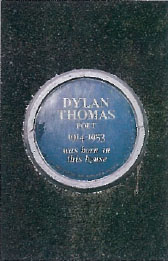
Chris Sharp
[caption id="DylanThomas_img15" align="aligncenter" width="166"]
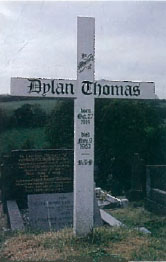
Chris Sharp
Visitors can follow various walking trails with Thomas connections around New Quay. The walks pass along the coast, through bluebell woods, and along tumbling brooks. Thomas certainly enjoyed walking and drew on this area for much of his poetry.
Eventually he and Caitlin left New Quay, some say because of deepening debts, a recurring problem wherever they lived. Despite his increasing success as a writer, Thomas never learned to manage his fiscal affairs. A patron, Margaret Taylor, obtained the Boathouse at Laugharne for him and his family. Here Thomas professed to be at his happiest and was certainly very productive.
The path leading to the Boathouse passes below the ramparts of Laugharne Castle, in whose gazebo Thomas often sat and wrote. The walkway parallels the River Taf, which is often “heron studded.” Then, after a slight bend, his “seashaken house on a breakneck of rocks” comes into view. The Boathouse path rises and passes the shed where Thomas worked prodigiously; his belongings have been left much as they were when he died.
tODAY, THE BOATHOUSE IS A SMALL MUSEUM with the drawing room containing many of his possessions. When the poet was not at work, the couple frequented the many pubs in the village, particularly Brown’s Hotel. The table where they sat, talked, and argued is still there, and the attitudes of local people toward the two is slowly softening as the benefits of tourism manifest themselves.
Despite Margaret Taylor’s patronage, the Thomases still had financial problems. He earned tidy sums by going on literary tours to America. While a good source of income, these trips produced some marital friction too; Caitlin did not trust, with good reason, her philandering husband. Often on these trips he became drunk and abusive. On one tour he was quoted as saying, after consuming 18 straight whiskies, “I have received a massive insult to the brain.”
In October 1953 Thomas left on another American tour. During a massive drinking session, he became ill, collapsed, and entered a coma from which he never recovered. His body was brought back to Laugharne and buried in St. Martin’s Churchyard.
his SIMPLE GRAVE, an appropriate place to end the tour, receives many visitors who pay their respects to a writer who not only loved words but could wondrously work them into evocative, and frequently provocative, images.





Comments